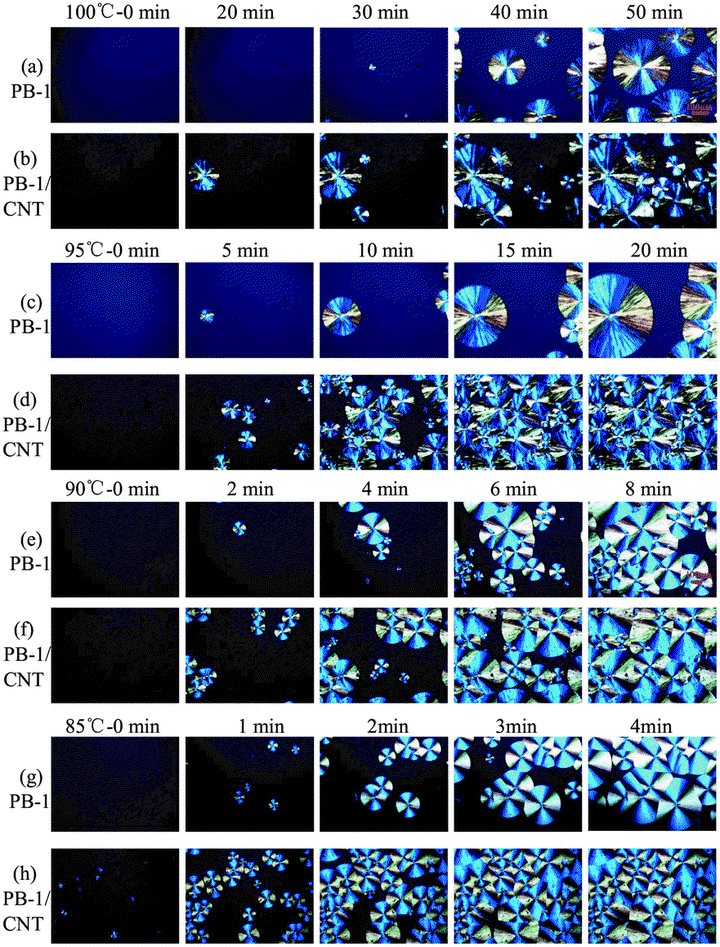Influence of lamellar thickness on the transformation of isotactic polybutylene-1/carbon nanotube nanocomposites

摘要
Probing the transformation from crystalline form II with 11/3 helical structure to form I with 3/1 helical structure in PB-1 and its nanocomposites is of great importance in both scientific fields and commercial applications. The influence of lamellar thickness on the transformation from form II to form I in isotactic polybutylene-1 (PB-1)/carbon nanotube (CNT) nanocomposites was investigated by differential scanning calorimetry (DSC), polarized optical microscopy (POM) and small-angle X-ray scattering (SAXS) techniques. The crystallization kinetics of PB-1/CNT nanocomposites at different isothermal temperatures (Tc) indicates that CNTs significantly accelerate the nucleation and growth of form II, acting as heterogeneous nucleating agents. However, the influence of CNTs on the form II–I transformation strongly depends on the lamellar thickness obtained at different Tc, verified by the change in melting point (Tm) and the SAXS results for form I. The addition of CNTs accelerates the transformation and elevates the Tm of form I when the Tc is lower than ∼88 °C, and slows the transformation and slightly decreases the Tm when the Tc is higher than ∼88 °C. This is probably due to the fact that the incorporation of CNTs facilitates an increase in lamellar thickness of form II formed at lower Tc but decreases the lamellar thickness of form II formed at higher Tc. Our study illustrates that the lamellar thickness is one of the key points to determine the transformation from form II to form I in PB-1.